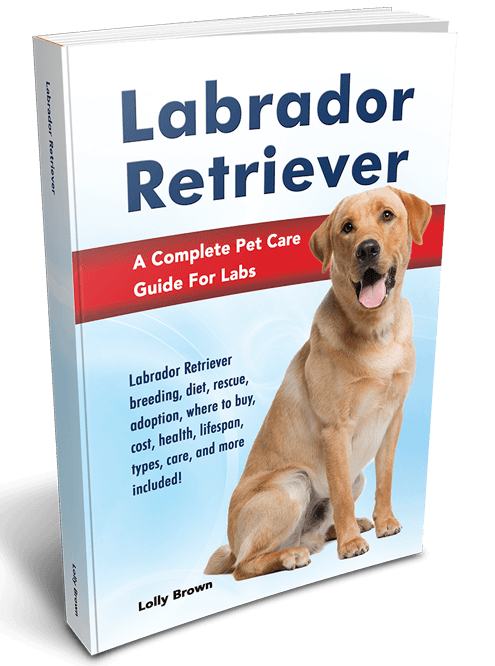CHAPTERS
Navigate to chapter
► Chapter One: Understanding Labrador Retrievers
► Chapter Two: Things to Know Before Getting a Labrador Retriever
► Chapter Three: Purchasing Your Labrador Retriever
► Chapter Four: Caring for Your New Labrador Retriever
► Chapter Five: Meeting Your Labrador’s Nutritional Needs
► Chapter Six: Training Your Labrador Retriever
► Chapter Seven: Grooming Your Labrador Retriever
► Chapter Eight: Breeding Your Labrador Retriever
► Chapter Nine: Showing Your Labrador Retriever
► Chapter Ten: Keeping Your Labrador Healthy
Chapter Five: Meeting Your Labrador’s Nutritional Needs

Labradors, more than most dogs, love to eat. This makes them especially prone to two conditions that Labs suffer from the most: obesity, and swallowing something inappropriate that needs professional medical services to treat.
Don’t expect Labradors to be picky eaters, or even to know the notion of portion control. It is thus your responsibility as owner to make sure that he regularly eats right, eats well, and in proper proportions.
Always make sure that your dog has sufficient drinking water readily available to himwhenever he needs to hydrate. Just like humans, a dog’s body is mostly composed of water – which he can lose just as quickly through urination, sweating, and even drooling. They would need to replenish the water in their bodies, so find a good and heavy quality water bowl that will be less likely to overturn from your pet’s playing around.
Following are some of the daily essential nutritional requirements that Labradors would need in their regular diet:
Mainly obtained from meat and most meat-based products, protein is essential for growth and cell regeneration and repair, and for Labs especially, are necessary to help maintain their coat or fur. Be aware that experts do not recommend feeding your dog raw eggs, as this may have actually be harmful to their health.
This is usually derived from fiber-based products, and help in maintaining the intestinal health of your pet. Some carbohydrates can even be a good source of energy for your pet.
Fats provide your pet with a concentrated source of energy, and are also essential for some vitamins (A, E, D and K) to be absorbed. They help in protecting the internal organs and are vital in cellular production.
Vitamins and minerals usually cannot be synthesized by a dog’s body, so the primary source of these are the synthesized versions obtainable in commercially available quality dog foods. Vitamins and minerals help in the normal functioning of their bodies, and also helps maintain their bones and teeth.
How to Select a High-Quality Dog Food Brand
Start with reading the label: the first three ingredients listed will tell you whether it is a vegetable or meat-based dog food. Experts will tell you to choose the meat-based dog food over the vegetable-based one, even if it is more expensive. But don’t make the mistake of thinking that you can substitute proper dog food with an all-meat diet. While being essentially omnivores, the important thing is to find balanced nutrition, which means essential vitamins and minerals, and not all of them are found in meat or meat products.
Opt for dry instead of canned dog food when you can, and limit feeding them table scraps. You don’t want the possibility of having your Labrador suddenly come down sick with swallowing small bits of bone from the piece of meat, or fish bone from the fish you threw to him as a snack. And besides that, commercially available dog food have already been especially formulated for all of their daily recommended needs. Dry dog food should be fed regularly, to provide them with their daily proper nutrition. If you must feed them scraps, these should be as a treat, and not as a regular diet.
RER, or Resting Energy Requirement, is the daily energy amount utilized by a dog while remaining at rest. If you have looked into this at all, you would know that there is usually a formula used to determine each dog’s RER, and this is mostly based on their weight:
RER = 70 (weight in kg)0.75
The idea is that, in the same way that we humans calculate our daily caloric intake based on our age, weight and activity levels, we can do the same for our dogs. For instance, if they become “active” (i.e., not resting), then their daily energy requirement also increases. These “activities” vary, and therefore so should the daily energy requirements. You would not feed the same amount to a neutered adult Labrador who is simply a house pet, for instance, compared to a pregnant Lab in her first few weeks of pregnancy. Below are some of the life changes that your Labrador might go through and a recommended adjustment in their daily RER:
| Neutered Adult | RER x 1 |
| Intact Adult | RER x 1.6 |
| Moderate Work Adult | RER x 3 |
| Pregnant dog in the last 21 days before birth | RER x 3 |
| Weaning Puppy | RER x 3 |
| Adolescent Puppy | RER x 2 |
| Obese Puppy undergoing weight loss activities | RER x 1 |
While it may seem pretty straightforward, it actually isn’t. Differences must also be accounted for breeds, the thickness of their coats, temperature, and other similar factors. You won’t be feeding the same amounts to a Labrador Retriever, for instance, as you would to a pitbull. Among two Labradors with relatively similar weights, you won’t feed them the same amounts if one is living in an apartment, as compared to one who has the free run of his family’s backyard.
Continue Reading…
Want to read the entire thing?

